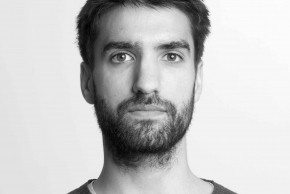Victor Gonzalez has just been recruited at PPSM as CNRS research fellow. He took up his new position on October 1st, 2023. He agreed to answer a few questions about his career, his projects and his vision of the position.
- Can you tell us a little about your background before coming to PPSM?
I obtained my PhD thesis (Chemistry, Sorbonne U.) in 2016. This thesis was conducted at the Centre de Recherche et de Restauration des Musées de France (C2RMF), and focused on the study of structure/property relationships of ancient lead carbonate mineral pigments as markers of their synthesis route. I then worked on post-doctoral contracts in the Netherlands, first at the Materials Science and Engineering Department of TU Delft University, then at the Science Department of the Rijksmuseum. I was interested in the reactivity of inorganic lead pigments in an organic medium. I finally returned to France on a Marie Curie European Fellowship, hosted at the PPSM, where I worked on understanding the weathering mechanisms of modern pigments for two years before joining the CNRS as a research fellow.
- What is your specialty and can you tell us about your research project?
My work focuses on the chemical study of ancient materials, in particular those making up historic paint layers. These layers are composite media, consisting of an organic binder in which organic and/or inorganic coloring materials are dispersed. Chemical mechanisms are active here, and can result in the formation of weathering products that can threaten the optical or physical integrity of the paint. My aim is to identify markers of the manufacturing processes and reactivity of ancient pictorial materials. To achieve this, I specialize in using multi-scale analytical methods to probe paintings. At the scale of a single work, I use instruments to chemically image the entire surface of a painting. At the scale of a paint layer, sometimes as fine as a hair, or micro-scale, I frequently use synchrotron radiation to study the chemical phenomena at play at the level of individual pigment grains.
- What motivated you to join PPSM and how do you see your integration?
The skills developed at PPSM, in photochemistry, functional molecule synthesis and instrumental development, represent a fantastic opportunity for me to take an innovative approach to the chemical study of heterogeneous systems such as historic paintings. For example, my aim is to use specific functional molecules as probes of certain key parameters in the evolution of paint layers over time, such as the concentration of certain metal ions. When I joined the laboratory, I initiated collaborations with colleagues specializing in the development of this type of molecule (Rémi Métivier, Isabelle Leray, Clémence Allain), hoping to create new links between photochemistry and the study of pictorial matter. What's more, the "Ancient Materials" theme is still new at PPSM, so it's very stimulating to be building this new theme alongside all my colleagues!
- Do you have any ideas or personal projects that you would like to explore within the PPSM and its environment?
The PPSM environment is fundamentally interdisciplinary. By joining this laboratory, I hope to benefit from the wealth of expertise around me to help me advance my research. I'm convinced that building bridges between different research communities is fundamental to overcoming the analytical challenges I face. The Paris-Saclay ecosystem is ideal for benefiting from a wealth of know-how, for example with the forthcoming creation of the Centre Pompidou's new conservation and creation center in Massy.
5. Do you have any advice for young scientists aspiring to a career in your field?
Let's face it, the situation in higher education and research is not good at the moment... There's an undeniable structural lack of positions, in my field and in others. I think my advice to young scientists is not to doubt themselves, despite the difficulties!
